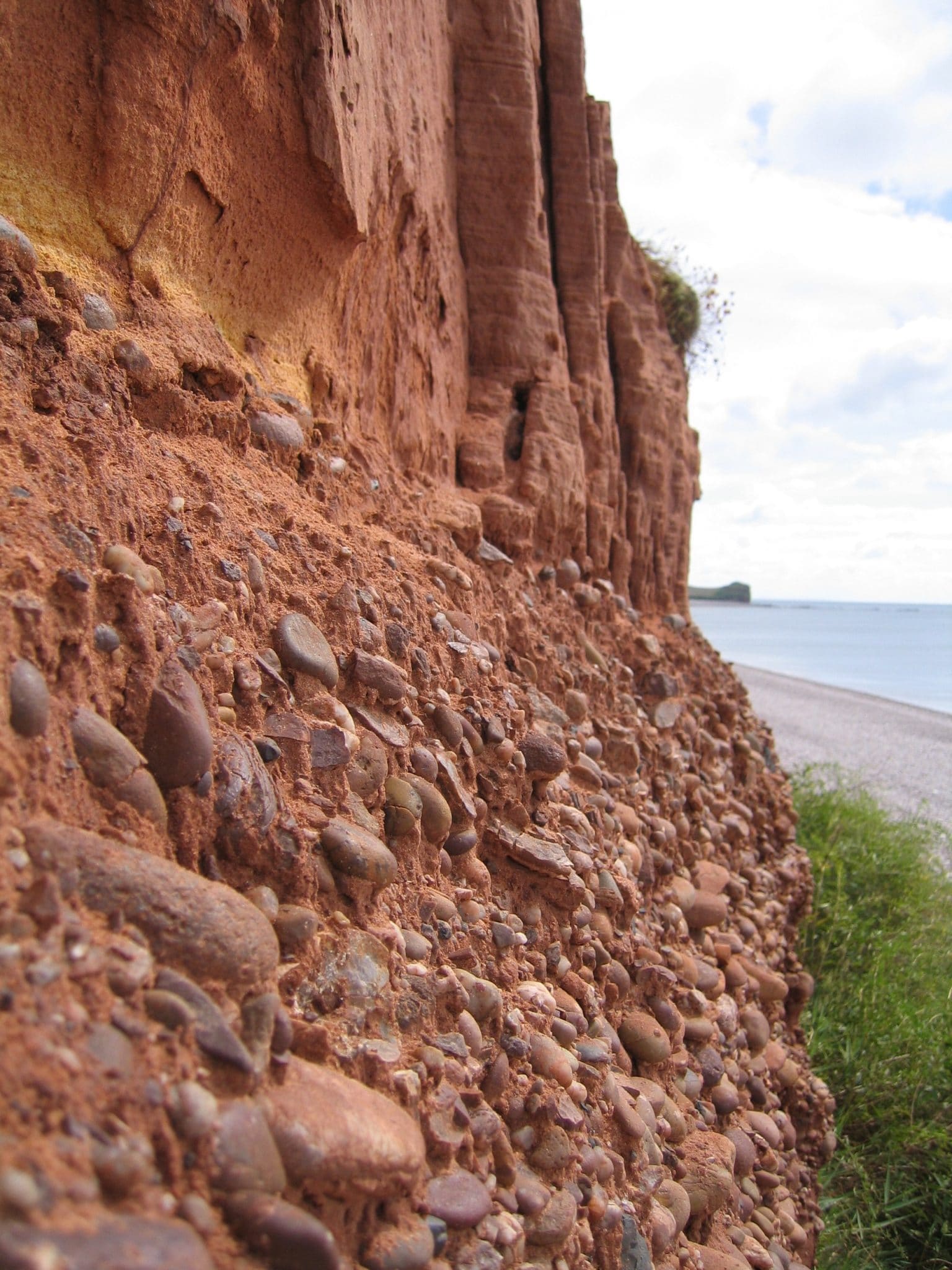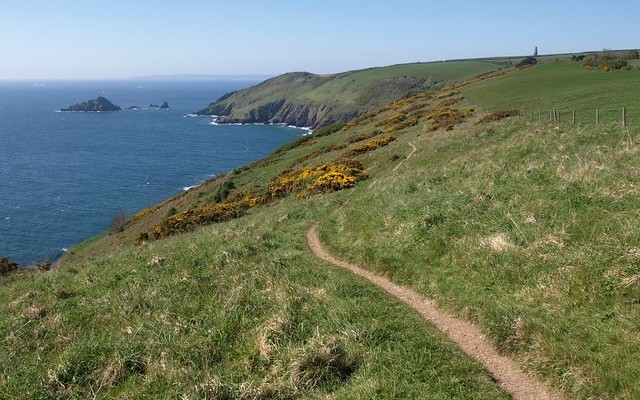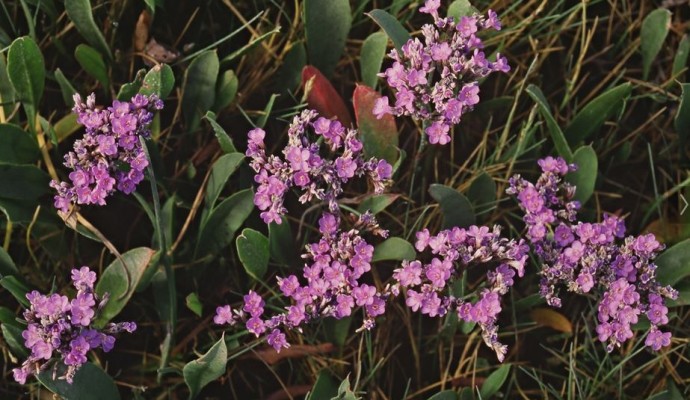Interesting information
This site is a Site of Special Scientific Interest (SSSI), Area of Outstanding Natural Beauty (AONB) and part of a World Heritage Site (WHS).

The cliffs in the western part of Budleigh Salterton expose the full thickness of the Lower Triassic Budleigh Salterton Pebble Beds. The Beds are made up of well-rounded pink, red and grey cobbles and pebbles that result from the erosion of 400 million-year-old quartzite outcrops lying to the south-west, possibly now under younger rocks in the English Channel or even Brittany. These were laid down as a coarse gravel in a large braided river which crossed the Triassic desert 246 million years ago. Over the years, erosion has released the pebbles from the bed, thus creating the present pebble beach. Some of these pebbles have been carried by the action of the sea as far east as Sussex and Kent.
The Budleigh Salterton Pebble Beds are overlain by red Otter Sandstone which is of mixed wind–blown and river origin and can be seen west of the promenade and in low cliffs behind it. At Otterton Point, on the eastern side of the mouth of the Otter Estuary, this sandstone has yielded important fossil remains including ‘the Devon rhynchosaur’, an ancient reptile that has allowed these rocks to be dated to the Triassic period.
On foot: The South West Coast Path runs around the estuary. This path can be easily accessed from nearby Budleigh Salterton – just head east along the town’s seafront.
By bike: There is an Exmouth to Budleigh Salterton cycle route.
By bus: Budleigh Salterton is easily accessed by bus.
By car: Budleigh Salterton’s Lime Kiln car park is right at the entrance to the reserve.
This site is a Site of Special Scientific Interest (SSSI), Area of Outstanding Natural Beauty (AONB) and part of a World Heritage Site (WHS).



